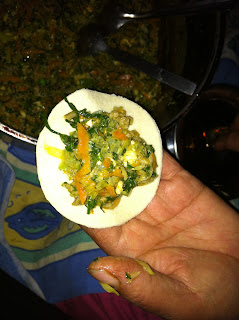On a cold morning when i am getting ready for the daily grind my morning cup of warm maple syrup latte and a slice of toasted buttery banana bread is really the only thing that can wake me up and warm me up.
For this recipe i used wholemeal self raising flour, but added LSA oats and hazelnut meal to give it some extra nutrition and texture. I have a sweet tooth but can't afford to have dessert for breakfast. I need some health benefit in my meal!
Instead of using the usual brown sugar called for in most banana bread recipes I used Rapadura (aka Panela) sugar which is unrefined cane sugar. It has a lovely caramel flavour and a nice crunch...i love to sprinkle it onto of my latte and eat with the froth... it is by far more delicious than regular sugar and i urge you too to make the swap! i also swapped some of the sugar for maple syrup simply because i love the stuff and it too is unrefined.
This recipe uses NO oil or butter, so although it does have sugar it is far healthier than most banana breads. I admit i love to slather it with butter after i toast it....but i can suggest you slather it with some macadamia butter if you want to stay away from the bad saturated fats.
This recipe takes only minutes to make and the smells permeating from your oven while it cooks are too good to not try baking this recipe... so go...do it now!
and enjoy!
xxx Ba
Ingredients
* 3/4c light evaporated milk
* 1/2c Rapadura (or brown sugar)
* 1/4c Maple syrup
* 2 eggs
* 4 extra ripe bananas mashed (the riper the better)
* 1/2c Rolled Oats
* 1 1/4c Wholemeal Self Raising Flour
* 1/3c LSA
* 1/3c Hazelnut meal (or almond meal)
Method
Preheat the oven to 180 degrees, line a loaf tin with baking paper
Whisk Rapadura, maple syrup, eggs and evaporated milk together in a large bowl
Stir in bananas, Stir in Oats, Stir in LSA and Hazelnut meal, Stir in Flour
Pour into Loaf tin and place in centre of oven. Bake for approx 1 hour....or until a skewer inserted comes out clean.
Remove from oven and leave to cool for 15 - 20 minutes. turn onto a baking rack to cool.
Cut and eat while warm or wait until it has cooled slice and wrap..or even freeze some for later.











